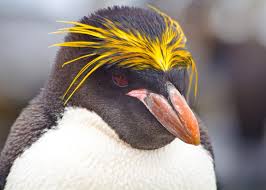Mini Sheet: Global Warming (Burundi 2012)
Global Warming (Burundi 2012)
31 August (Burundi ) within release Global Warming goes into circulation Mini Sheet Global Warming face value 8,140 Burundian franc
| Mini Sheet Global Warming in catalogues | |
|---|---|
| Michel: | Mi: BI 2570-2573KB |
| Stamp Number: | Sn: BI 1114 |
| Belgium: | Bel: BI BL319 |
Mini Sheet is square format.
Also in the issue Global Warming:
- Mini Sheet - Global Warming face value 8,140;
- Souvenir Sheet - Ursus Maritimus face value 7,500;
- Mini Sheet - Bubo scandiacus face value 4*1070;
- Stamp - Bubo scandiacus face value 1,070;
- Mini Sheet - Odobenus rosmarus face value 4*3000;
- Stamp - Odobenus rosmarus face value 3,000;
- Mini Sheet - Pygoscellis adliae face value 4*3000;
- Stamp - Pygoscellis adliae face value 3,000;
- Mini Sheet - Sterna paradisaea face value 4*1070;
- Stamp - Sterna paradisaea face value 1,070;
- Mini Sheet - Ursus maritimus face value 4*7500;
- Stamp - Ursus maritimus face value 7,500;
- Mini Sheet - Fauna and Climate Warming face value 8,140;
- Souvenir Sheet - Polar Bear (Ursus maritimus) face value 7,500;
|
Data entry completed
46%
|
|
|---|---|
| Mini Sheet Global Warming in digits | |
| Country: | Burundi |
| Date: | 2012-08-31 |
| Emission: | Commemorative |
| Format: | Mini Sheet |
| Face Value: | 8,140 Burundian franc |
Mini Sheet Global Warming it reflects the thematic directions:
Animals are multicellular, eukaryotic organisms of the kingdom Animalia (also called Metazoa). All animals are motile, meaning they can move spontaneously and independently, at some point in their lives. Their body plan eventually becomes fixed as they develop, although some undergo a process of metamorphosis later on in their lives. All animals are heterotrophs: they must ingest other organisms or their products for sustenance.
Birds (Aves), a subgroup of Reptiles, are the last living examples of Dinosaurs. They are a group of endothermic vertebrates, characterised by feathers, toothless beaked jaws, the laying of hard-shelled eggs, a high metabolic rate, a four-chambered heart, and a strong yet lightweight skeleton. Birds live worldwide and range in size from the 5 cm (2 in) bee hummingbird to the 2.75 m (9 ft) ostrich. They rank as the class of tetrapods with the most living species, at approximately ten thousand, with more than half of these being passerines, sometimes known as perching birds. Birds are the closest living relatives of crocodilians.
Mammals are any vertebrates within the class Mammalia (/məˈmeɪli.ə/ from Latin mamma "breast"), a clade of endothermic amniotes distinguished from reptiles (including birds) by the possession of a neocortex (a region of the brain), hair, three middle ear bones and mammary glands. All female mammals nurse their young with milk, secreted from the mammary glands. Mammals include the largest animals on the planet, the great whales. The basic body type is a terrestrial quadruped, but some mammals are adapted for life at sea, in the air, in trees, underground or on two legs. The largest group of mammals, the placentals, have a placenta, which enables the feeding of the fetus during gestation. Mammals range in size from the 30–40 mm (1.2–1.6 in) bumblebee bat to the 30-meter (98 ft) blue whale. With the exception of the five species of monotreme (egg-laying mammals), all modern mammals give birth to live young. Most mammals, including the six most species-rich orders, belong to the placental group. The largest orders are the rodents, bats and Soricomorpha (shrews and allies). The next three biggest orders, depending on the biological classification scheme used, are the Primates (apes and monkeys), the Cetartiodactyla (whales and even-toed ungulates), and the Carnivora (cats, dogs, seals, and allies).
Penguins are a group of aquatic flightless birds from the family Spheniscidae (/sfɪˈnɪsɪdiː, -daɪ/) of the order Sphenisciformes (/sfɪˈnɪsəfɔːrmiːz/). They live almost exclusively in the Southern Hemisphere: only one species, the Galápagos penguin, is found north of the Equator. Highly adapted for life in the ocean water, penguins have countershaded dark and white plumage and flippers for swimming. Most penguins feed on krill, fish, squid and other forms of sea life which they catch with their bills and swallow whole while swimming. A penguin has a spiny tongue and powerful jaws to grip slippery prey
Marine mammals are mammals that rely on marine (saltwater) ecosystems for their existence. They include animals such as cetaceans (whales, dolphins and porpoises), pinnipeds (seals, sea lions and walruses), sirenians (manatees and dugongs), sea otters and polar bears. They are an informal group, unified only by their reliance on marine environments for feeding and survival.
Marine life, or sea life or ocean life, refers to the plants, animals and other organisms that live in the salt water of the sea or ocean, or the brackish water of coastal estuaries. At a fundamental level, marine life helps determine the very nature of our planet. Marine organisms produce much of the oxygen we breathe. Shorelines are in part shaped and protected by marine life, and some marine organisms even help create new land. Altogether there are 230,000 documented marine species, including over 16,000 species of fish, and it has been estimated that nearly two million marine species are yet to be documented. Marine species range in size from the microscopic, including plankton and phytoplankton which can be as small as 0.02 micrometres, to huge cetaceans (whales, dolphins and porpoises) which in the case of the blue whale reach up to 33 metres (109 feet) in length, being the largest known animal.






